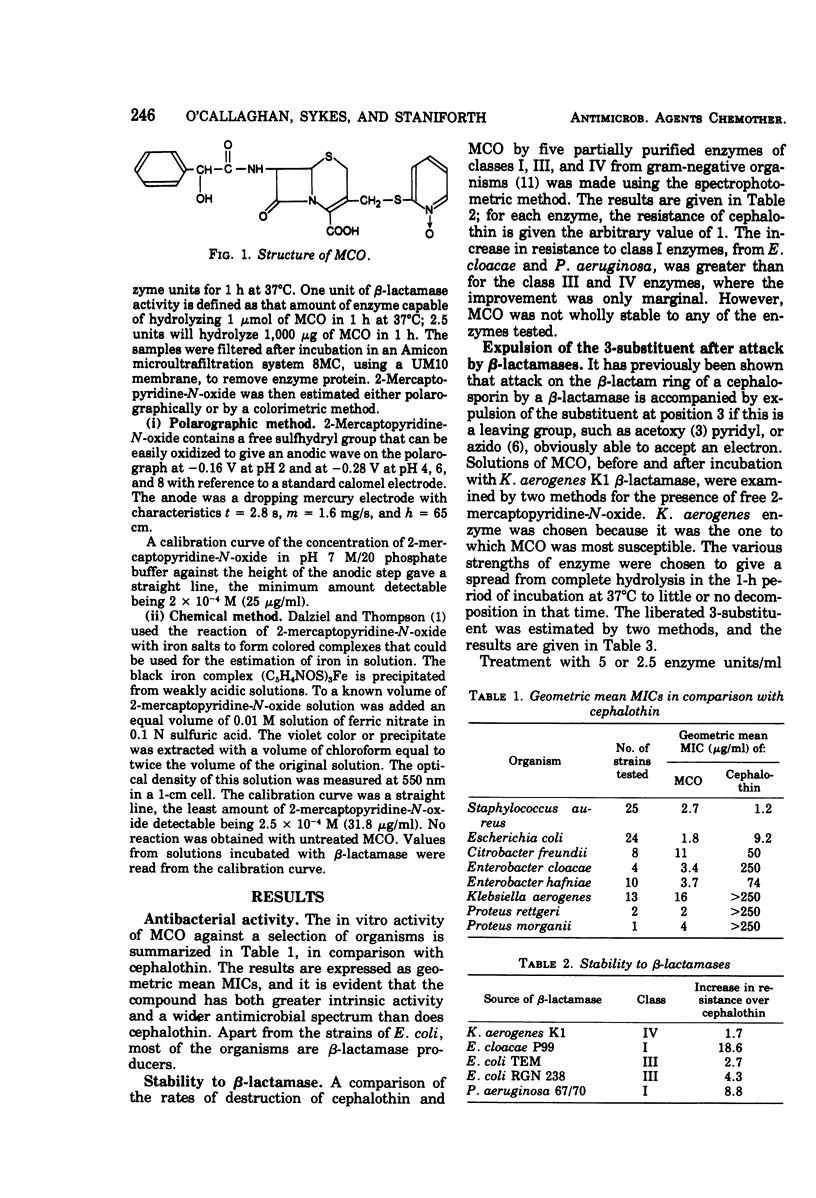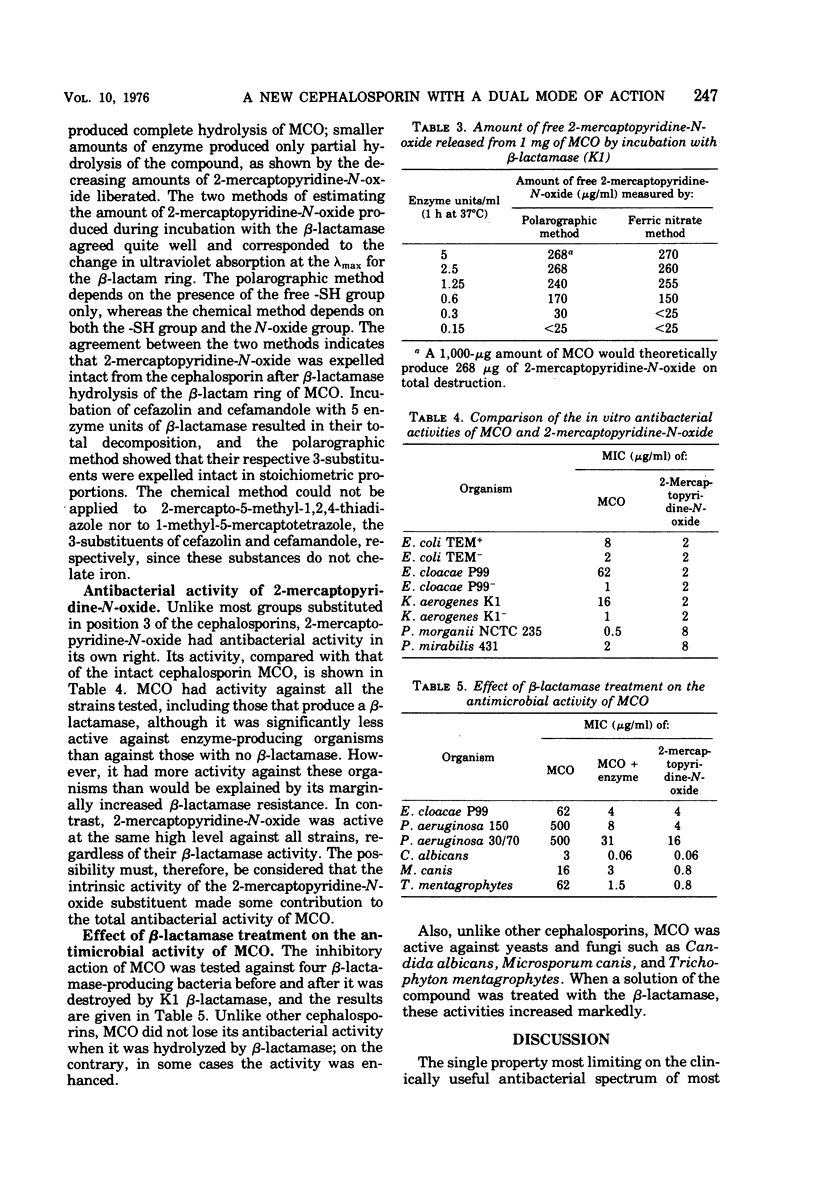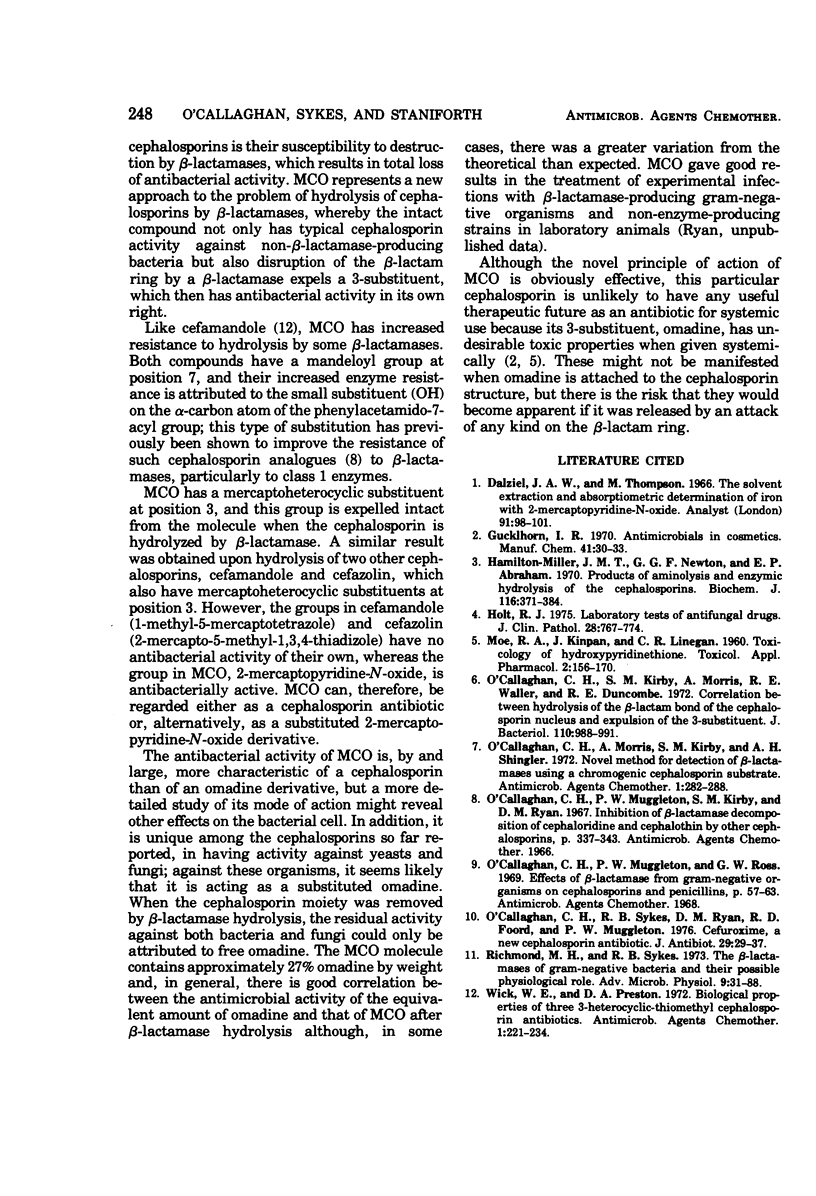Abstract
A cephalosporin, (6R,7R)-7-[(2R)-2-hydroxy-2-phenylacetamido]-3-(pyrid-2-yl-N-oxide) thiomethylceph-3-em-4-carboxylic acid (MCO), that could lead to a novel approach to the problem of β-lactamase destruction is described. The compound is slightly more resistant to some β-lactamases than is cephalothin, but it is still hydrolyzed by many to a varying degree. Hydrolysis of the β-lactam bond of a cephalosporin releases the 3-substituent, which in MCO is itself an antibacterial agent, 2-mercaptopyridine-N-oxide. Thus, MCO has a dual mode of action, and bacteria that do not produce an effective amount of a β-lactamase are inhibited by the intact cephalosporin, whereas those that do hydrolyze it are inhibited by the released antibacterial compound.
Full text
PDF



Selected References
These references are in PubMed. This may not be the complete list of references from this article.
- Hamilton-Miller J. M., Newton G. G., Abraham E. P. Products of aminolysis and enzymic hydrolysis of the cephalosporins. Biochem J. 1970 Feb;116(3):371–384. doi: 10.1042/bj1160371. [DOI] [PMC free article] [PubMed] [Google Scholar]
- Holt R. J. Laboratory tests of antifungal drugs. J Clin Pathol. 1975 Oct;28(10):767–774. doi: 10.1136/jcp.28.10.767. [DOI] [PMC free article] [PubMed] [Google Scholar]
- MOE R. A., KIRPAN J., LINEGAR C. R. Toxicology of hydroxypyridinethione. Toxicol Appl Pharmacol. 1960 Mar;2:156–170. doi: 10.1016/0041-008x(60)90045-4. [DOI] [PubMed] [Google Scholar]
- O'Callaghan C. H., Kirby S. M., Morris A., Waller R. E., Duncombe R. E. Correlation between hydrolysis of the -lactam bond of the cephalosporin nucleus and expulsion of the 3-substituent. J Bacteriol. 1972 Jun;110(3):988–991. doi: 10.1128/jb.110.3.988-991.1972. [DOI] [PMC free article] [PubMed] [Google Scholar]
- O'Callaghan C. H., Morris A., Kirby S. M., Shingler A. H. Novel method for detection of beta-lactamases by using a chromogenic cephalosporin substrate. Antimicrob Agents Chemother. 1972 Apr;1(4):283–288. doi: 10.1128/aac.1.4.283. [DOI] [PMC free article] [PubMed] [Google Scholar]
- O'Callaghan C. H., Sykes R. B., Ryan D. M., Foord R. D., Muggleton P. W. Cefuroxime - a new cephalosporin antibiotic. J Antibiot (Tokyo) 1976 Jan;29(1):29–37. doi: 10.7164/antibiotics.29.29. [DOI] [PubMed] [Google Scholar]
- Richmond M. H., Sykes R. B. The beta-lactamases of gram-negative bacteria and their possible physiological role. Adv Microb Physiol. 1973;9:31–88. doi: 10.1016/s0065-2911(08)60376-8. [DOI] [PubMed] [Google Scholar]
- Wick W. E., Preston D. A. Biological properties of three 3-heterocyclic-thiomethyl cephalosporin antibiotics. Antimicrob Agents Chemother. 1972 Mar;1(3):221–234. doi: 10.1128/aac.1.3.221. [DOI] [PMC free article] [PubMed] [Google Scholar]


